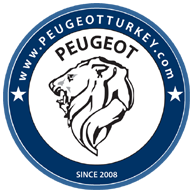The Blueprinting process, which can be described as balancing all moving parts and smoothing all flow surfaces, has become a standard in companies focused on performance in the world. When longevity and maximum power are aimed, Blueprinting is not a luxury but a necessity.
Another description of the blueprinting process is to minimize factory clearance tolerances. When determining these tolerances, strictly adhere to the factory data.
The most important thing to consider before the Blueprint process is that all parts are 100% clean. This includes all bolts, nuts, plugs, etc. It is included.
In some applications, it is seen that the interior of the crankcase is painted. This application is recommended as it will create detergent effect on carbon and other residues. In addition, painting is the ideal cleaning element for the crankcase floor.
The most important process is balancing the crank. The crank, which is examined in detail for breakage and cracks, is balanced to be 100% flat if it can pass this test. The oil holes are carefully cleaned and their edges are softened and widened. The sharpness of the course arms is increased and the courses are polished. The beds are treated the same.
Connecting rods require maximum care since they are the heaviest parts that move. All arms must be absolutely and ABSOLUTELY the same length and weight. It goes without saying that they should be 100% straight. Arm bearings are also polished and new bolts are used as recommended.
The pistons must be separated individually and carefully to use the corresponding pins, and sharp surfaces (valve seats) on the piston surface must be softened to prevent detonation that may occur. The adjustment of the piston diameter and boron distance is one of the most important factors to be considered. While small pistons make it difficult for the rings to perform their duties, large pistons can destroy the shirts by scratching them.
When the rings are seated in the shirts blank, pressed in reverse with the piston, the gaps should be checked when they come to the right angle with the shirt and this gap should not exceed 0.3 mm.
Another important issue is balancing the moving counterweights. Surpluses are reduced by drilling, and deficiencies are provided by drilling again, by filling the drilled places with heavier metals. Since this application requires extreme sensitivity, it should be done in professional hands. This application is the most crucial and moment-saving part of the Blueprint process. This application also contributes to engine life.
The cylinder head should be completely removed and inspected for cracks and cracks. Getting chips from the surface within tolerances guarantees the flatness of the cover. Valve targets should be checked and replaced if necessary. Another important point is that the valves are of equal length and 100% straight. If new valves are used, the valve seats must be replaced or adapted to the new valves. The widths of the valve seats should preferably be brought to the same size.
After these processes are completed, the desired (previously calculated) compression ratio is obtained by grinding the cover. Equal tension of the valve springs is another important consideration.
The same attention should be paid when collecting the engine, since all of the bolts must be torqueed at the rates determined by the factory.
The Blueprint process is an issue in itself and not as easy as described on this page. It should be done in highly professional hands. Because almost all parts of the application have no return. However, it is DEFINITELY a requirement for maximum engine life and maximum power. |





 sinan-s
sinan-s